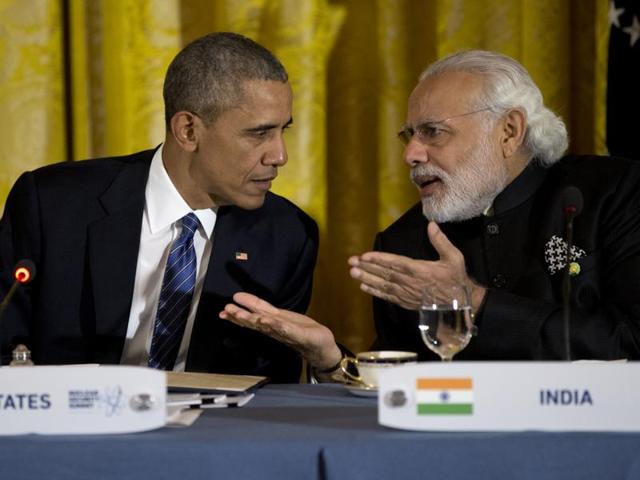Close India-US ties are crucial for shaping global order
For the first time in history India and the United States have a deep stake in each other’s success
The foundations of the global order seem increasingly unsteady. The intensity of upheavals in West Asia, Europe’s ongoing crisis, and great power competition in the Asia-Pacific, is matched only by the transformational forces rocking the global economy, climate, cyberspace, and other transnational domains.

The principal strategic task for the United States — and its partners — is to channel these forces and help shape international circumstances before other forces and events shape them for us.
This should be the animating purpose of the strategic partnership between India and the US.
India’s rise is as significant a feature of today’s international landscape as any other. The same is true of its partnership with the US — a partnership between two countries that for the first time in history have a deep stake in each other’s success.
Read | US and India should collaborate to counter China in the Indian Ocean
Thanks to sustained bipartisan consensus in both countries, and sustained efforts by both leaderships, the depth and breadth of today’s partnership would have been unthinkable two decades ago.
In the security realm, after years of non-alignment, India looks to the US as its largest defence supplier and both engage in more bilateral military exercises today than either does with any other country. In the economic realm, bilateral and people-to-people ties are growing tighter by the day. Two decades ago, two-way trade was at $8 billion a year. Today, it is on the verge of $100 billion. From Silicon Valley to Bengaluru and Wall Street to Mumbai, Indians and Americans are making an impact on one another and in the world.
For all the good news, both leaderships recognise that much work remains if we are to realise the full promise of this partnership. Ambitious bilateral goals — whether it is reaching $500 billion annual trade, working towards a free trade agreement, or fully integrating India into the broader Asian economic architecture — are necessary, but not sufficient.
The prerequisite to taking this leap is India’s economic revitalisation. Washington can contribute toward this by providing capital, technology, and expertise, but what New Delhi does for itself will matter far more in comparison.
Read | India-US bonding: It’s not about give and take
If India’s economic success is substantial and sustainable, much is possible. This begins with the India-Pacific, where together India and the US can help build a regional order that protects convergent values and interests, starting with stronger engagement with Japan, Australia, and the smaller Southeast Asian states. Beyond the India-Pacific, India plays a critical role in nearly every region and issue of consequence — from the future of democracy to nuclear non-proliferation, great power politics to climate, and the impact of technological innovation on international affairs. In each of these areas and others, a common approach will be critical to enhancing the value of the strategic partnership.
For all the achievements of the past decade, it is the decade to come that will demonstrate whether the shared strategic bet will yield benefits and deliver on the two countries’ shared vision for the Pacific Century.
William J Burns is former US deputy secretary of state and president of the Carnegie Endowment for International Peace. This article is published as part of an association between HT and Carnegie India.
The views expressed are personal





